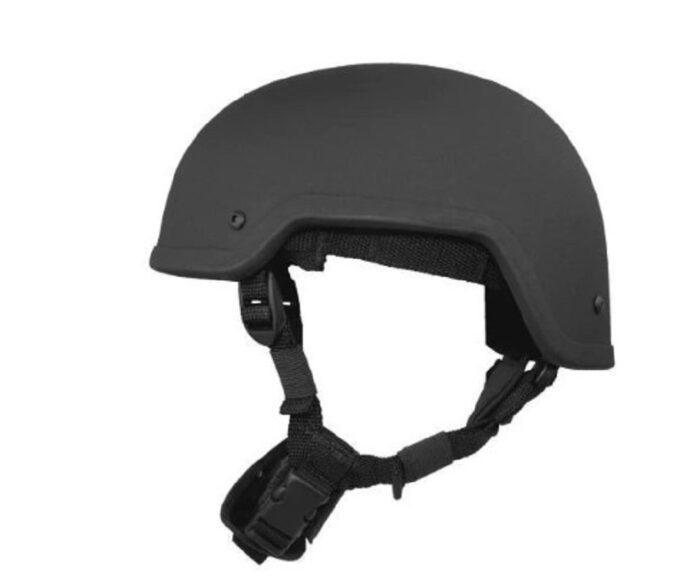Tactical helmets protect against light warheads and shards during combat and war impact. It also allows military personnel to attach tactical hearing equipment, night visions, IF signals, cameras, lights, radios, etc.
Modern helmets are made of lighter-weight materials like Kevlar, carbon fiber, and impact-resistant plastic material and are often designed to protect the wearer from gunfire shots.
New ballistic helmets have padding for comfort and fit and are designed to be as efficient and ergonomic as possible.
Different Types of Ballistic Helmets:
MICH / ACH helmets
The MICH ballistic helmet (Modular Integrated Communication Helmet) was designed to enhance the PASGT helmets. The Advanced Combat Helmet is the most updated version of the modular integrated communication helmet.
These bulletproof helmets are usually made from the latest Kevlar material, protecting military personnel from handgun blows, ballistic projectiles and shrapnel.
Instead of the PASGT chinstrap, an updated four-point retention system provides greater comfort and better impact protection.
FAST Helmets
This style of the helmet goes by many names: ATE (over-the-ear), high cut, and maritime fit, but whatever you call it, this is the cutting edge of tactical helmet technology.
The ATE helmet was originally developed for special maritime operations and, as the name suggests, is cut higher on the sides to prevent water from getting caught in the ear cups at high speeds.
This higher cut of these helmets means that this helmet offers less protection but greater visibility and easier use of communication devices.
ATE helmets are typically made from Dyneema material, a specialty composite material that is lightweight but incredibly bulletproof resistant.
Some ATE helmets are made from the Kevlar aramid material as the MICH, offering more protection and greater weight.
Low-cut Ballistic Helmets for the Military:
The low-cut ballistic helmet means this helmet comes down on the sides to cover the ears. That extra coverage is helpful in some scenarios, and while the additional material of low-cut styles can mean extra weight, Kevlar keeps the weight as low as possible.
The modern design of these helmets and the adjustable memory foam inside make it easy to tailor each helmet to the military personnel that puts it on, so you get a comfortable fit every time.
Bump helmets for the Military:
The low- and high-cut ballistic helmets above are military bulletproof helmets. Military-grade helmets like bump helmets are lighter and made for blunt impacts that could cause a head injury.
High-cut Ballistic Helmets for the Military:
High-cut helmets are more open on the sides to leave the ears exposed. This design feature was first intended for special maritime operations but has proved beneficial in various applications. ATE styles are ideal when military personnel need to wear a headset, as the helmet doesn’t interfere with that accessory.
These ballistic helmets do more than stay out of the way of a headset — they make it easy to integrate the headset via a rail mounting system. One can also attach other accessories, such as lights or cameras, for tactical operations.
Degree of Protection of Ballistic Helmets:
Penetration resistance is how the helmet resists gunfire shots. For better ballistic protection, one needs an NIJ Level IIIA-rated helmet, which means it offers 9mm, .357, and .44 Magnum protection.
Important Note About Ballistic Helmet Weights:
The most common trade-off for ballistic helmets or any armor is protection against weight. Extensive testing of bulletproof helmet materials has commonly shown that thicker and stiffer helmets will perform better with blackface deformation and resistance to penetration.
In addition, some fiber materials of ballistic helmets, such as aramid fibers (Kevlar), also use stronger resins during molding to increase the stiffness of the bulletproof helmet. So just because a tactical helmet is lightweight doesn’t always mean it is the better. Remember to select a ballistic helmet based according to specific needs.








